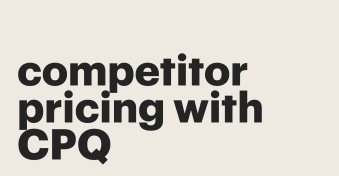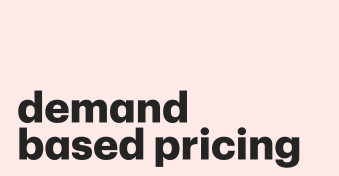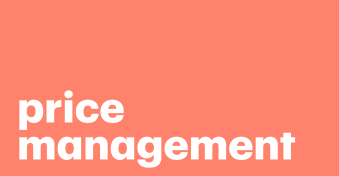A strong sales orientation helps drive revenue, improves customer satisfaction, and scale your business.
Sounds perfect, right? Well, it may involve a little more than meets the eye.
Sales teams need tools that simplify complex processes, reduce inefficiencies, and enable faster decision-making.
How do successful companies do this? One way is to utilize CPQ.
CPQ (configure-price-quote) is designed to help sales teams focus on what they do best—selling.
CPQ empowers sales reps to close deals faster and more effectively.
Here we’ll explore how CPQ can enhance sales orientation and drive measurable results.
Before we jump to the conclusion, you need to understand what sales orientation is, who primarily uses it, and why.
What is sales orientation?
Let’s start with the basics around this marketing strategy.
Sales orientation, also referred to as product orientation, might sound counterintuitive at first, as it refers to a business model that focuses on sales without considering the customer’s needs.
To define it a little more clearly, a sales oriented strategy is intended to cast a wider net, assuming anyone could be your customer regardless of consumer needs.
Without taking the customer’s wants into consideration, salespeople take a more aggressive sales techniques through persuasion as opposed to appealing to an ideal customer by showing how you can solve their needs.
This is the opposite strategy of market-oriented companies.
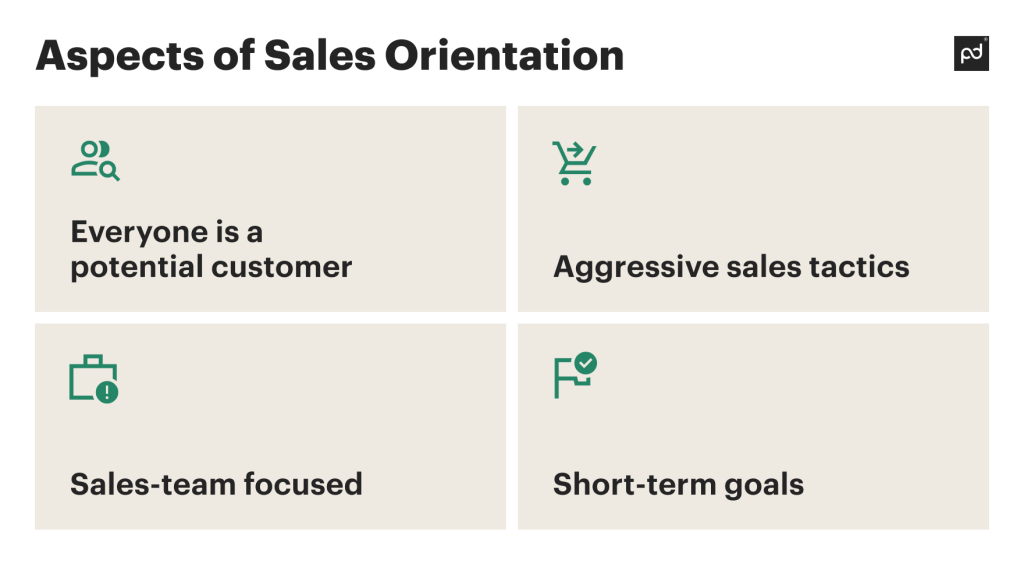
Everyone is a potential customer
Why target only your ICP (Ideal Customer Profile) when you can target everyone?
This may not work for every business depending on your industry and how niche your products and services.
Think things most everyone uses and needs: transportation, travel, food, housing…these industries more commonly use this approach.
Aggressive sales tactics
Holidays are a great time for the aggressive selling tactic, but it can be applied at any time throughout the year.
Think of bundle deals, large discounts, referrals, membership discounts, BOGO (buy one get one), and more.
There’s a reason car salesmen have a reputation for being aggressive–this is a perfect example of a use case for sales orientation.
Sales-team focused
In some companies, sales is an important but equal part of what makes the overall business successful.
For others, sales is the lifeblood. The top dog. The main priority.
This tends to be especially true for companies that offer sales commissions and incentives.
Getting your teams on the same page is easy with PandaDoc.
Set workflows, establish approval systems, and generate deals all in one place to let your sales team (and others) fly.
Short-term goals
Sales-oriented businesses keep there eye on the prize.
Back to the automotive example, dealerships often focus on monthly sales which are built up on a day-to-day basis.
There is a constant pressure for sales and how many cars were sold on any given day.
A dealership is down? They get more aggressive on sales.
A dealership is doing great? They stay aggressive to keep the money rolling in.
There’s not really an off switch with this approach. Other businesses may look at a larger picture, focusing instead on quarterly sales.
What are the benefits of sales orientation?
Sales orientation can appeal to businesses for different reasons.
One benefit of using this approach is less money spent on production and other departments such as R&D (research and development) or market research.
Other benefits include:
- Potential for higher revenue: With the appeal to a broader audience, when done right and paired with quality, this can lead to more revenue.
- Quicker product development: With the more fast and aggressive approach, companies can see quicker which products are selling and which aren’t.
What are the disadvantages of sales orientation?
Not every business will benefit from using a sales orientation approach.
There are some downsides to consider before choosing whether or not this makes sense for you.
- Not sustainable for the long-term: this approach is a daily pressure cooker, and while it may help in the short-term, it doesn’t have any kind of long-term strategy to keep bringing money in.
- Missed opportunities: customer loyalty isn’t really a part of this approach. Most transactions are one-and-done, which means you have to continuously start over to find new clients for every sale.
- Higher costs: Running frequent promotions and sales comes with a higher expenditure in marketing, whether or not you bring in enough sales volume to make up for it.
What is the difference between sales and marketing orientation?
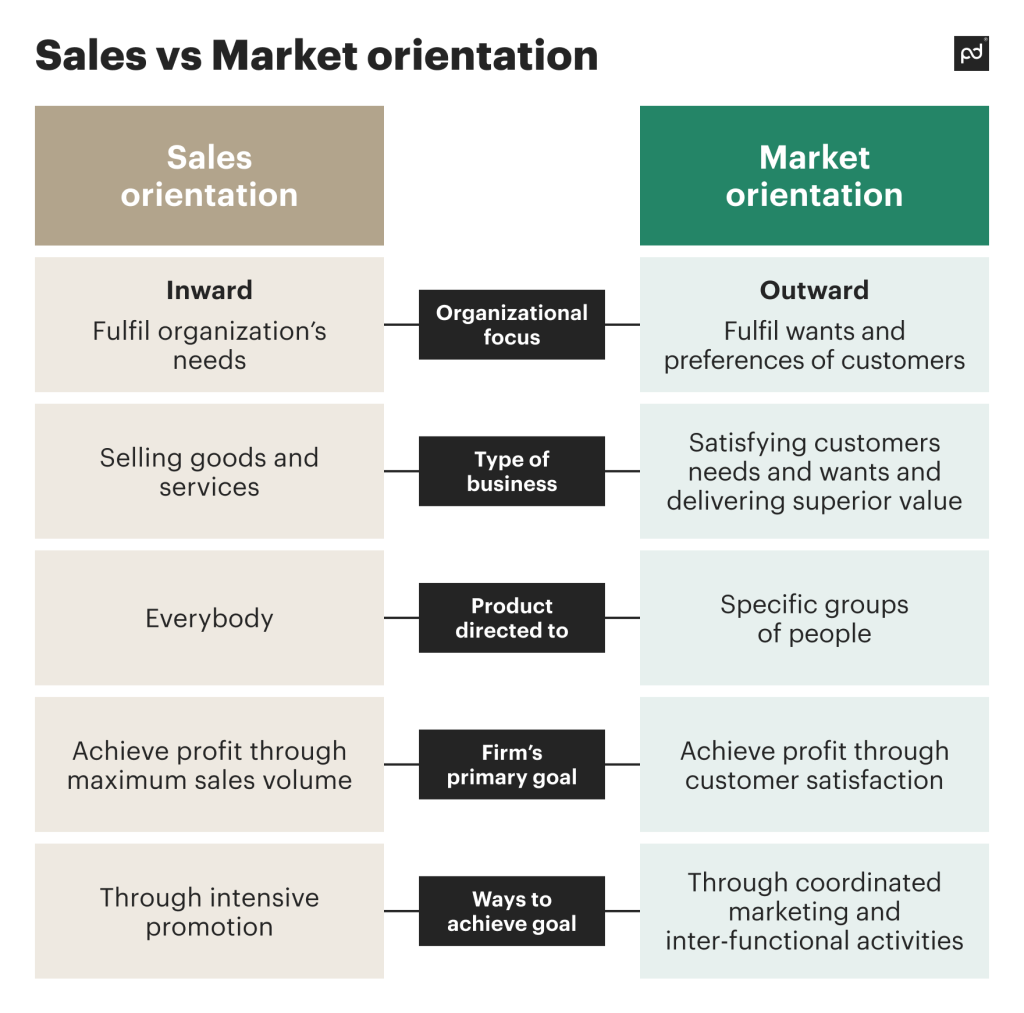
Sales orientation is about a broad, aggressive approach that doesn’t take specific customer needs or wants into consideration.
Market orientation focuses on selling directly to their intended audience by addressing very specific needs and pain points.
It also has a long-term goal, rather than short-term.
What is an example of a sales-oriented company?
Sales orientation is utilized by more businesses than you may realize.
Let’s go through an example of sales orientation, how a sense of urgency factors into sales promotions and ultimately sales volume.
Automotive
Using our primary example, car dealerships live and die on a sales oriented approach.
Once you’ve stepped onto the lot and shown interest, they’re going to do everything they can to sell you before you walk off to a competitor.
You’ll also see a lot of promotions and sales year-round.
Real Estate
Similar to the automotive industry, real estate agents live off commission. No sale, no paycheck.
That’s motivation enough to lend to more aggressive and broad sales tactics. Think of when you see an open house.
There’s no criteria to enter and look at the house, it’s open to all, that’s the point.
All they want is the best chance of finding the one person needed for that sale, then onto the next, wash and repeat.
Tech
This may not be an obvious one, but tech falls into the category of businesses that commonly use sales orientation.
Think about it, you’re reading this blog right now on a tech site.
We’re proud to offer a comprehensive suit of tools and solutions to fit a variety of needs for almost any industry and any department or team within that industry.
Insurance
Everyone needs insurance. Whether it’s car insurance, renter’s insurance, personal insurance, there’s all kinds.
With this in mind, insurance companies love to offer bundle deals.
All your insurance in one place, and at a discount? Easy, right? That’s the appeal.
As we can see with these examples, a sales orientated business approach relies more heavily on outbound sales.
All of the above examples and more primarily target people through:
- Cold calling
- Door-to-door sales
- Persistent communication (follow up emails, calls, even texts)
- Sweetening the deal to close on the spot
- Sense of urgency (For a limited time only! Act fast! Only for the next 24hrs! And so on…)
Enhancing sales team productivity with streamlined workflows
Eliminate bottlenecks and enable your team to focus on selling.
We’ve dug into the grit of sales orientation, who uses it, why, and how it works.
If you’re looking to implement or improve your current use of this strategy, quoting software is an excellent solution.
CPQ reduces the manual workload for sales teams by simplifying pricing models, automating approvals, and eliminating repetitive tasks.
In short?
Less time spent on admin work like creating proposals, and the added benefit of a shortened sales cycle.
HAAS Alert saves an average of 120 hours a month, with an impressive 66.67% increase in document creation efficiency with PandaDoc CPQ.
“Upgrading our subscription to take advantage of PandaDoc CPQ for HubSpot has been well worth it. I had tried other CPQ options and they were all subpar. I’m super happy with our choice and can’t stress enough how much we needed this solution”
Emerson McCuin, Director of Revenue Operations at HAAS Alert
Speeding up the sales process with automated quoting
Faster quotes mean faster deals.
CPQ helps sales teams accelerate the sales process by automating complex configurations and pricing tasks.
Though this business strategy may drive sales without aiming at a target market, high-quality products will bring in short-term sales and consumer demand.
Gone are the days where sales reps have to spend hours manually entering data to generate quotes.
This speed enables them to focus on more high-value tasks, like customer relationship-building and negotiation, ultimately leading to more closed deals and even customer loyalty.
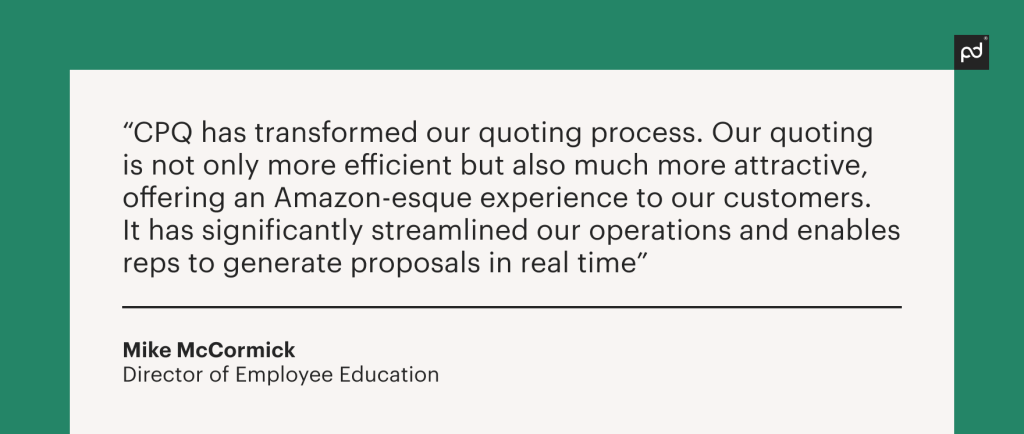
PandaDoc CPQ is more than just a sales tool—it’s a must for sales-oriented teams looking to close deals faster, work more efficiently, and deliver exceptional customer experiences.
By automating the quoting process, providing real-time insights, and aligning sales with pricing strategies, CPQ empowers sales teams to focus on what they do best—selling.
Disclaimer
Parties other than PandaDoc may provide products, services, recommendations, or views on PandaDoc’s site (“Third Party Materials”). PandaDoc is not responsible for examining or evaluating such Third Party Materials and does not provide any warranties relating to the Third Party Materials.
